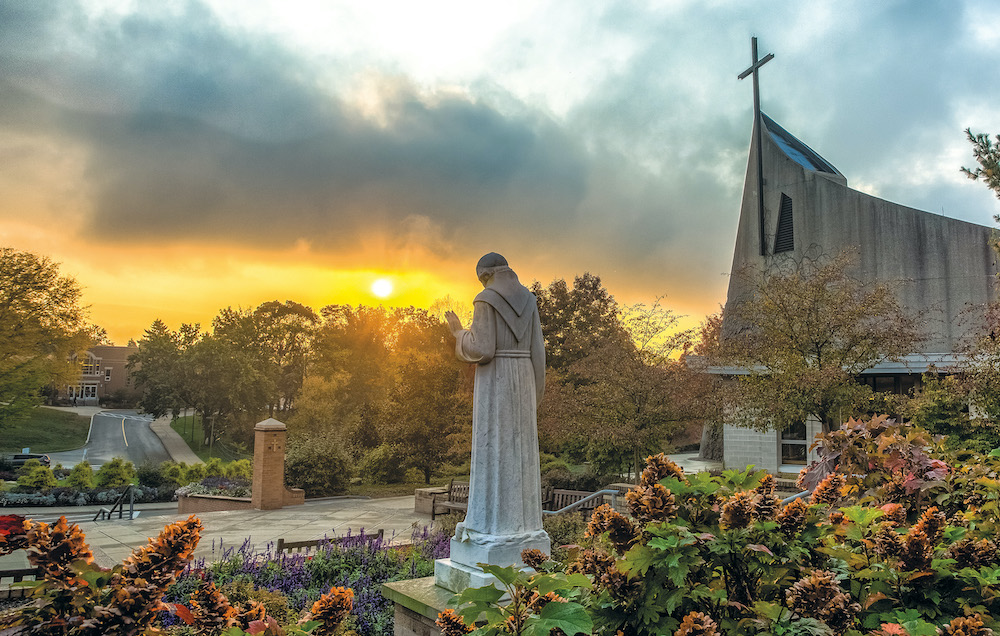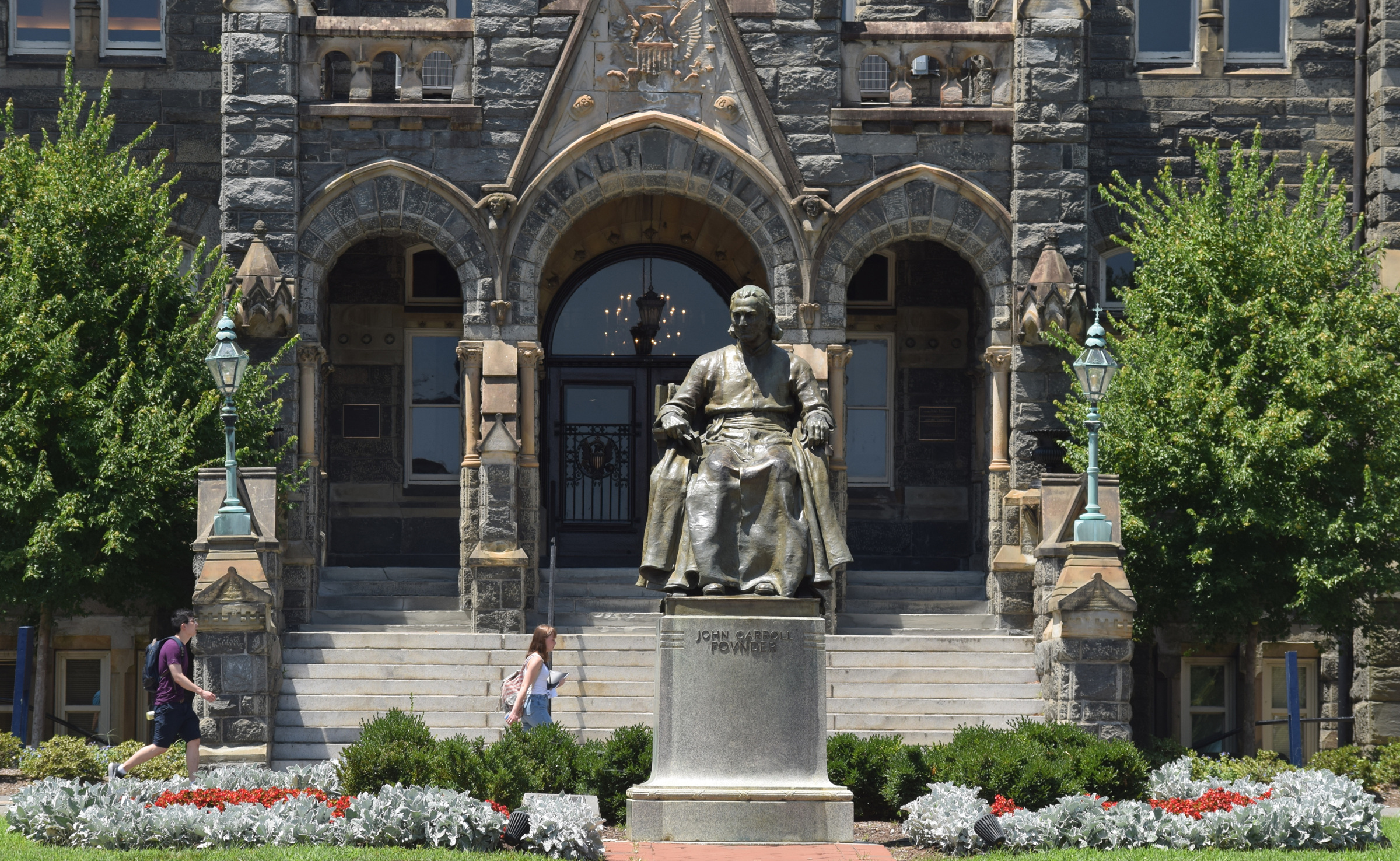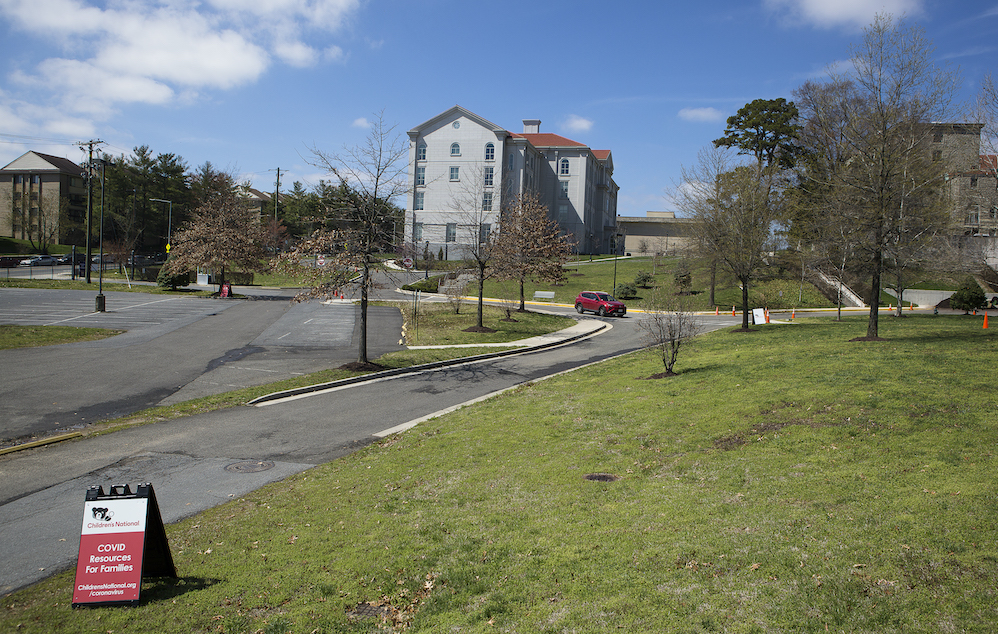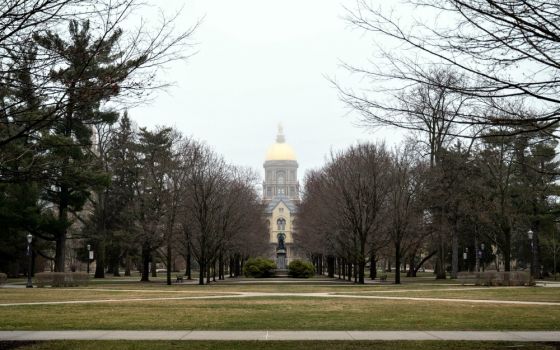
Franciscan University of Steubenville is seen in this undated photo. In response to the unprecedented economic fallout of the COVID-19 pandemic, the Ohio university announced April 21 that it will cover the remainder of tuition costs, after scholarships and grants have been applied, for the fall 2020 semester for all incoming full-time undergraduate students enrolled in its on-campus programs. (CNS/Courtesy of Franciscan University of Steubenville)
With classes moved online and dorm rooms emptied out, the COVID-19 pandemic has left Catholic colleges across the country strapped for cash. And now, with no clear end in sight, the question for some schools goes beyond how to support their students and staff, but how to stay alive.
"There's a great fear that we can lose some of our smaller schools if this doesn't turn around in some meaningful way," said Vincentian Fr. Dennis Holtschneider, president and CEO of the Association of Catholic Colleges and Universities.
Holtschneider told NCR that many Catholic colleges "went right into the red" when they decided to close their campuses. On the one hand, most schools refunded their students for room and board, costing them millions of dollars each. On the other hand, schools had to pay for the technology to move everything online all at once — "an expensive proposition," Holtschneider said.
The summer – when many schools typically run programs that help bring money to the bottom line – will also be a loss, he said.
Looking ahead to the fall, administrators are currently trying to figure out potential options for opening safely, should they even be allowed to do so. But those possibilities could be expensive as well, like placing students in local hotels so they are more spread out.
"Everybody's trying to figure out financially how to survive," said Holtschneider.
For his part, Holtschneider said he's spending most of his life these days working with the American Council on Education [ACE] to get government aid that works for Catholic institutions. The CARES Act passed in March allocated $14 billion for colleges and universities, a number ACE President Ted Mitchell called "inadequate to support student needs." In a letter sent to congress April 9, ACE, along with the Association of Catholic Colleges and Universities and the Association of Jesuit Colleges and Universities, requested an additional $46 billion in emergency aid for students and institutions.

A statue of Georgetown University's founder, Bishop John Carroll at the Washington, D.C., campus entrance is pictured July 22, 2019. U.S. Catholic college leaders have zeroed in on issues their schools face, including financial challenges, their place in the modern secular world and how they can play a role in helping the church recover from the abuse crisis. (CNS/Elizabeth Bachmann)
There are some prominent Catholic colleges that have large endowments they can fall back on — the University of Notre Dame, Boston College and Georgetown University each have endowments of more than $1 billion, according to the National Association of College and University Business Officers.
The vast majority of Catholic colleges, however, are not in that situation. According to the Association of Catholic Colleges and Universities, the average endowment for Catholic institutions in 2016 was around $142 million — less than half the average for all private colleges in the country. And what little endowments smaller schools do have often have conditions for how certain donations can be used.
Robert Kelchen, professor of higher education at Seton Hall University in New Jersey who studies higher ed finance, said that "lack of a financial backstop" makes schools more vulnerable to the financial challenges of the pandemic. That's because schools with small endowments are "almost entirely dependent on tuition and housing dollars," he said, and they're being forced to spend money to set up online course infrastructure.
For schools in rural areas, another concern is if students will be willing to travel farther away to go to college for the next couple of years, Kelchen added. That's on top of already declining nationwide college enrollment numbers, which have fallen about 11% in the past 8 years.
Uncertain futures have institutions across the country, Catholic or not, doing what they can to save money in the present — implementing pay cuts and hiring freezes, and stopping construction around campus. Catholic universities, many of which Holtschneider says have a long commitment to first-generation students, are also shifting their fundraising priorities to raise money for student emergency funds so students are able to simply continue their education.
Advertisement
Ohio Dominican University, a school with an estimated endowment of about $24 million by Data USA, created an emergency fund to support its students' basic needs, education expenses and travel expenses. Assumption College in Massachusetts, with an endowment of $103 million, also established a $3 million coronavirus relief fund for its students.
The Franciscan University of Steubenville in Ohio, which has a $57 million endowment, recently announced that it will be covering 100% of tuition costs for new undergraduates for fall 2020, although students will still have to cover room, board and other fees.
Despite their smaller endowment sizes, Catholic institutions provide more students with financial aid than the national average. According to the Association of Catholic Colleges and Universities, 96% of students on Catholic campuses receive some form of financial aid, compared to a national percentage of 85% for undergraduates who received aid in 2016-2017.
Catholic schools are also doing what they can to support students and staff in the present moment. Saint Mary-of-the-Woods College in Indiana will be paying all student workers for wages they would have earned in April. Manor College in Pennsylvania, which is mostly a commuter school, has been serving some students and families through its food pantry, president Jonathan Peri told NCR.

A car approaches Children's National Hospital coronavirus drive-thru testing station located at Trinity Washington University in Washington, D.C., March 26. (CNS/Tyler Orsburn)
Holtschneider said that while a number of schools have put employees on furlough for the summer, Catholic universities are still paying for their health insurance.
"People are all trying to do the right thing," Holtschneider said, "but they're scrambling because even with cutting the budgets and putting people on furlough, they're still millions of dollars away from being able to run a program that meets its costs."
According to Kelchen, there are hundreds of small private colleges that have been on shaky financial ground for decades. "Frankly, some of them have no business being able to survive, but they do because that's their mission," he said. For Catholic institutions, that sense of mission can be important in helping them keep going despite the odds.
Nevertheless, the longer this goes on, there will be more and more colleges "that will have no other option but to close," said Kelchen, who estimated the number of private four-year colleges that will close in the coming year to be somewhere between 10 and 20. He said that number could jump to as many as 50 if the fall semester is compromised, and possibly closer to 100 if the entire 2020-21 academic year is compromised.
But even if that number stays low, that's still multiple communities and hundreds of lives being affected — students, faculty, employees. If a school goes down, not only does that change the path of its students' lives and education, but small towns can lose their major employers as well, explained Holtschneider.
"Universities in the end are communities of human beings," he said. "So, it's really important to many, many people that we try to keep these schools viable."
[Jesse Remedios is a staff writer with National Catholic Reporter's EarthBeat. His email address is jremedios@ncronline.org.]







